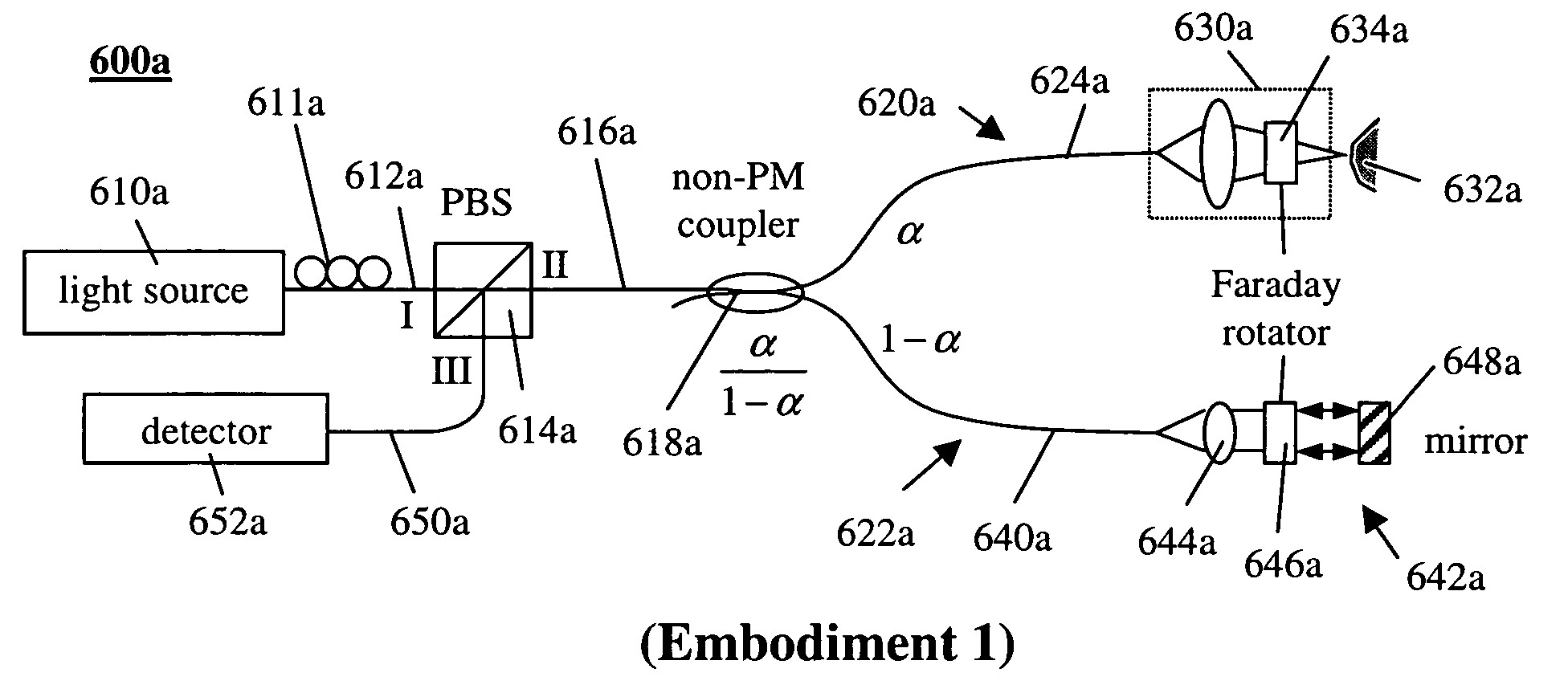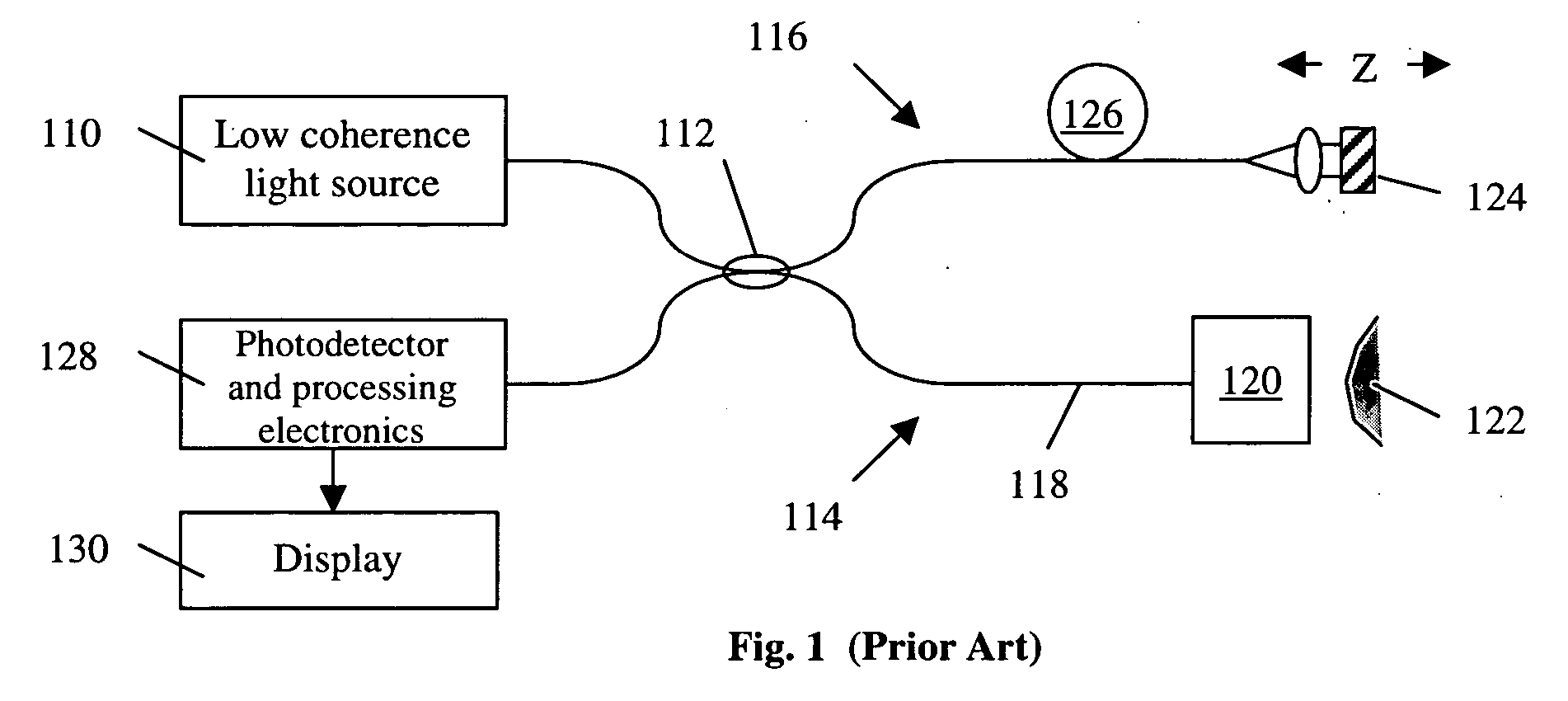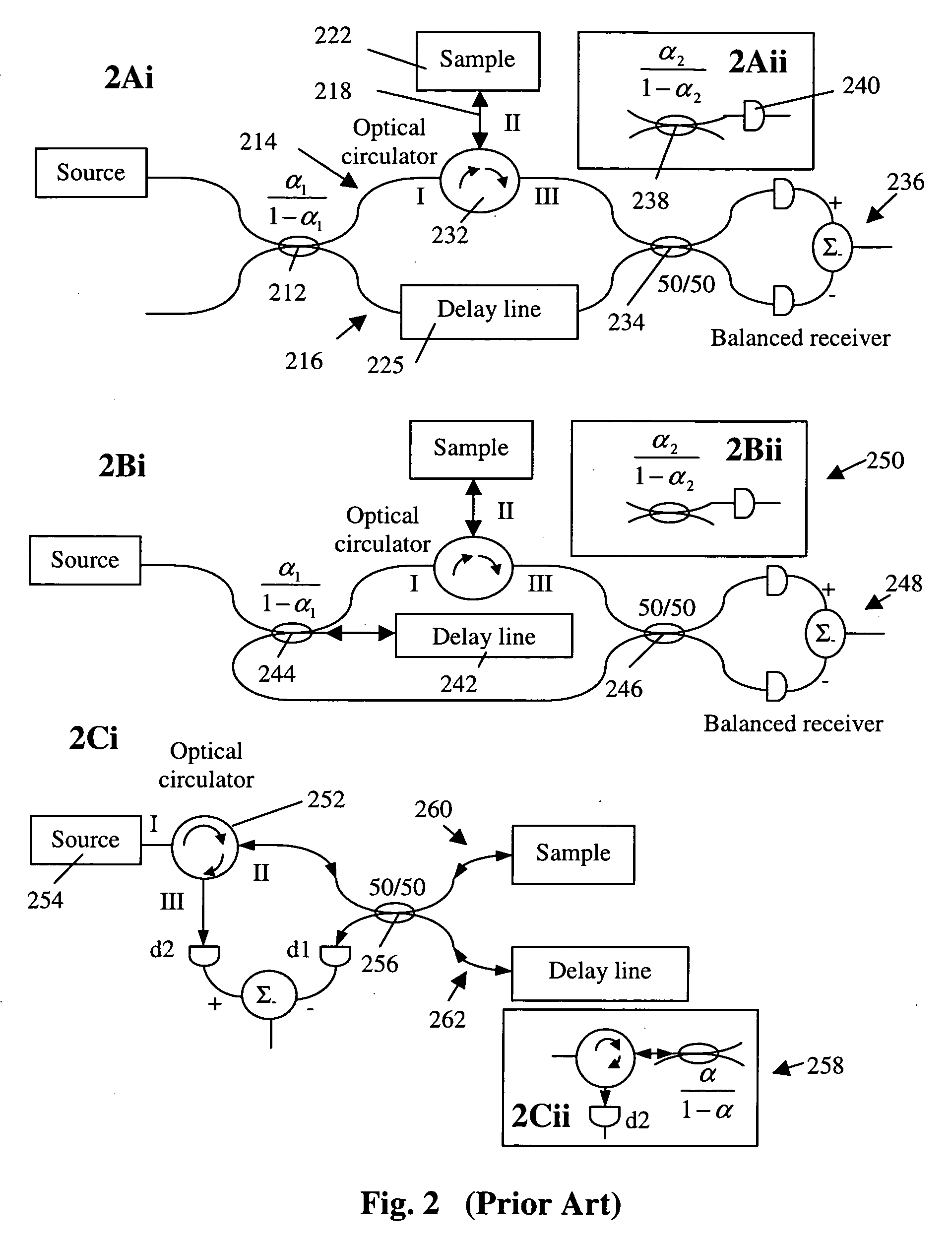Simple high efficiency optical coherence domain reflectometer design
a reflectometer and high-efficiency technology, applied in the field of optical imaging, can solve the problems of polarization fading, affecting the quality of the resulting image, and the configuration is limited to an optical efficiency of 25%, so as to reduce the cost of the ocdr system, the effect of reducing the cost of the system and being easy to conver
- Summary
- Abstract
- Description
- Claims
- Application Information
AI Technical Summary
Benefits of technology
Problems solved by technology
Method used
Image
Examples
embodiment 1
[0051]FIG. 6A is a diagram of the OCDR system according to a first embodiment of the present invention. The light source 610a introduces to the system 600a a linearly polarized light wave either through a linearly polarized light source 610a or by placing a linear polarizer (not shown) directly after an unpolarized source, wherein the linear polarizer can be an independent polarizer or the polarizing beam splitter as will be made clear below. The light source 610a has a center wavelength within the optical spectrum range from ultra-through violet to near infrared. It is preferably derived from a superluminescent diode (SLD), a light emitting diode (LED), a short pulsed laser such as a Ti:sapphire laser, a photonic crystal fiber laser or a spontaneous emission based rare earth doped optical fiber broad band light source. For these applications, the latter light sources are considered “low coherence” light sources. The subject invention can also be implemented with a frequency swept l...
embodiment 2
[0077]FIG. 7A is a diagram of the OCDR system according to a second embodiment of the present invention. The light source 710a introduces to the system 700a a linear polarized light wave either through a linearly polarized light source 710a or by placing a linear polarizer (not shown) directly after an unpolarized source. The light source 710a has a center wavelength within the optical spectrum range from ultra-violet to near infrared. It is preferably derived from a superluminescent diode (SLD), a light emitting diode (LED), a frequency swept laser, a short pulsed laser such as a Ti:sapphire laser, a photonic crystal fiber laser or a spontaneous emission based rare earth doped optical fiber broad band light source. The light source 710a is coupled through a short length of a non-PM fiber 712a to the input port (port I) of a polarizing / polarization beam splitter (PBS) 714a. Assuming that the PBS has two polarization modes or directions that are in the vertical and horizontal directi...
PUM
| Property | Measurement | Unit |
|---|---|---|
| optical rotation angle | aaaaa | aaaaa |
| optical coherence domain reflectometry | aaaaa | aaaaa |
| optical efficiency | aaaaa | aaaaa |
Abstract
Description
Claims
Application Information
 Login to View More
Login to View More - R&D
- Intellectual Property
- Life Sciences
- Materials
- Tech Scout
- Unparalleled Data Quality
- Higher Quality Content
- 60% Fewer Hallucinations
Browse by: Latest US Patents, China's latest patents, Technical Efficacy Thesaurus, Application Domain, Technology Topic, Popular Technical Reports.
© 2025 PatSnap. All rights reserved.Legal|Privacy policy|Modern Slavery Act Transparency Statement|Sitemap|About US| Contact US: help@patsnap.com



